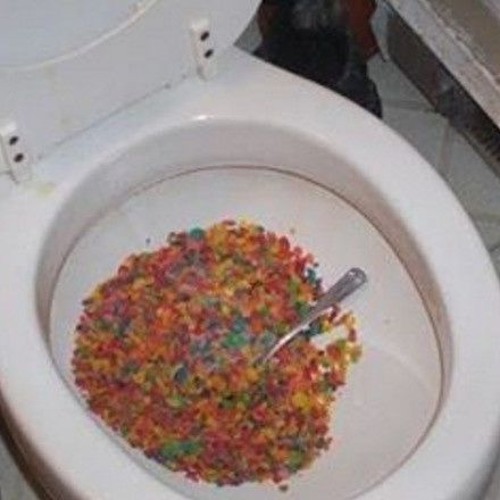Can You to Dispose of Food Waste in the Toilet?
Can You to Dispose of Food Waste in the Toilet?
Blog Article
In this article further down yow will discover a lot of sound material all about Is it safe to flush food (especially rice) down the toilet?.

Intro
Many individuals are typically faced with the dilemma of what to do with food waste, specifically when it pertains to leftovers or scraps. One usual question that occurs is whether it's all right to purge food down the toilet. In this short article, we'll explore the reasons why people may take into consideration purging food, the effects of doing so, and alternative methods for proper disposal.
Reasons why people might consider flushing food
Absence of recognition
Some people may not be aware of the possible injury brought on by purging food down the bathroom. They may erroneously think that it's a safe method.
Convenience
Purging food down the toilet might feel like a quick and easy remedy to taking care of undesirable scraps, especially when there's no neighboring trash can available.
Idleness
In some cases, individuals may merely pick to flush food out of sheer idleness, without thinking about the effects of their actions.
Effects of flushing food down the toilet
Ecological influence
Food waste that ends up in rivers can add to contamination and injury marine communities. In addition, the water used to flush food can stress water resources.
Plumbing problems
Purging food can result in stopped up pipelines and drains, causing expensive pipes repairs and hassles.
Kinds of food that must not be flushed
Fibrous foods
Foods with coarse structures such as celery or corn husks can obtain entangled in pipelines and create obstructions.
Starchy foods
Starchy foods like pasta and rice can soak up water and swell, causing blockages in pipelines.
Oils and fats
Greasy foods like bacon or food preparation oils should never be purged down the toilet as they can strengthen and cause obstructions.
Correct disposal approaches for food waste
Using a waste disposal unit
For homes outfitted with garbage disposals, food scraps can be ground up and flushed with the pipes system. Nonetheless, not all foods appropriate for disposal in this manner.
Recycling
Certain food packaging products can be reused, lowering waste and decreasing ecological influence.
Composting
Composting is an eco-friendly way to get rid of food waste. Organic materials can be composted and used to enrich dirt for horticulture.
The significance of proper waste administration
Decreasing ecological injury
Appropriate waste management techniques, such as composting and recycling, assistance minimize air pollution and protect natural deposits for future generations.
Securing plumbing systems
By staying clear of the practice of flushing food down the commode, home owners can avoid pricey plumbing repair services and maintain the stability of their pipes systems.
Final thought
Finally, while it may be appealing to purge food down the commode for comfort, it is necessary to recognize the prospective repercussions of this action. By taking on correct waste administration methods and getting rid of food waste responsibly, people can add to healthier pipes systems and a cleaner atmosphere for all.
FLUSH FOOD DOWN THE TOILET?
FLUSHING FOOD CAN CAUSE BLOCKED DRAINS IN YOUR HOME
All of the plumbing fixtures in your home are connected to the same sewer pipe outside of your home. This outdoor sewer pipe is responsible for transporting all the wastewater from your home to the Council sewer mains. Even small pieces of food that go down the kitchen sink can cause problems for your sewer. It should therefore be obvious that flushing larger bits of food, such as meat, risks a clog in either the toilet itself or the sewer pipes. Flushing greasy food is even more problematic because oil coagulates when it cools, coating the interior lining of your pipes.
THE TOILET IS NOT A BIN
Food isn’t the only thing that people shouldn’t be flushing down the toilet. People use the toilet to dispose of all kinds of things such as tampons, makeup wipes, dental floss, kitty litter and even underwear. Water goes to great lengths to educate residents about the high costs and stress placed on wastewater treatment systems simply from people flushing the wrong stuff down the toilet. It costs taxpayers millions of dollars each year, and homeowners thousands in blocked drain repairs.
FLUSHING FOOD IS A WASTE OF WATER
Flushing food is a waste of our most precious resource - water. In June this year Level 1 water restrictions were introduced to protect water supply from drought conditions. Much of New South Wales continues to be affected by prolonged drought with recent figures revealing up to 97 per cent of the state remains in drought. Depending on whether you have a single or dual flush toilet, every single flush uses between five and 11 litres of water. In the current climate this is a huge amount of water to be wasting on flushing food that should be placed in the bin (or better yet, the compost).
https://www.jabplumbingsolutions.com.au/blog/can-you-flush-food-down-the-toilet

Do you appreciate reading about What Can Happen If You Flush Food Down the Toilet?? Try leaving a short review down below. We'd be delighted to find out your insights about this content. Hoping that you visit us again in the near future. If you enjoyed our blog posting please consider to pass it around. Thank-you for going through it.
Schedule Estimate Report this page